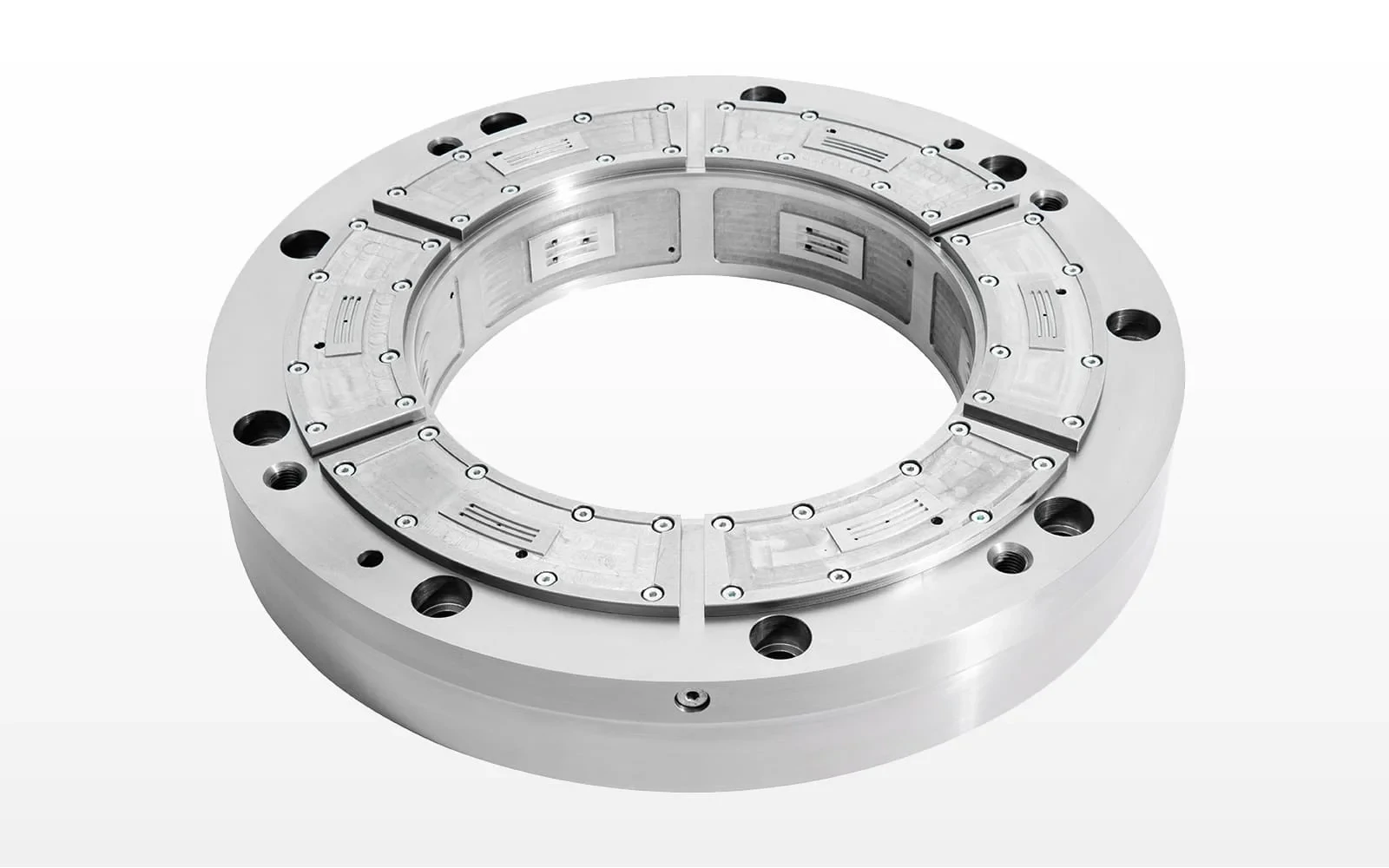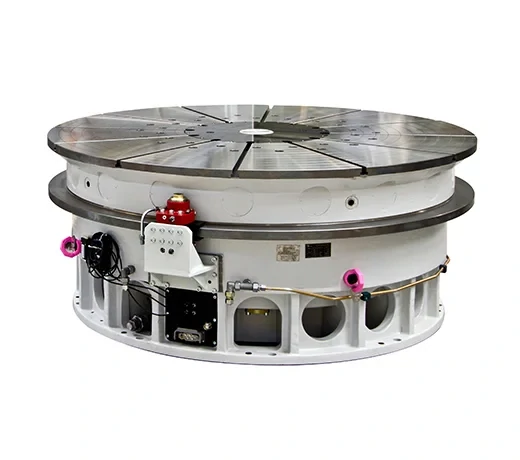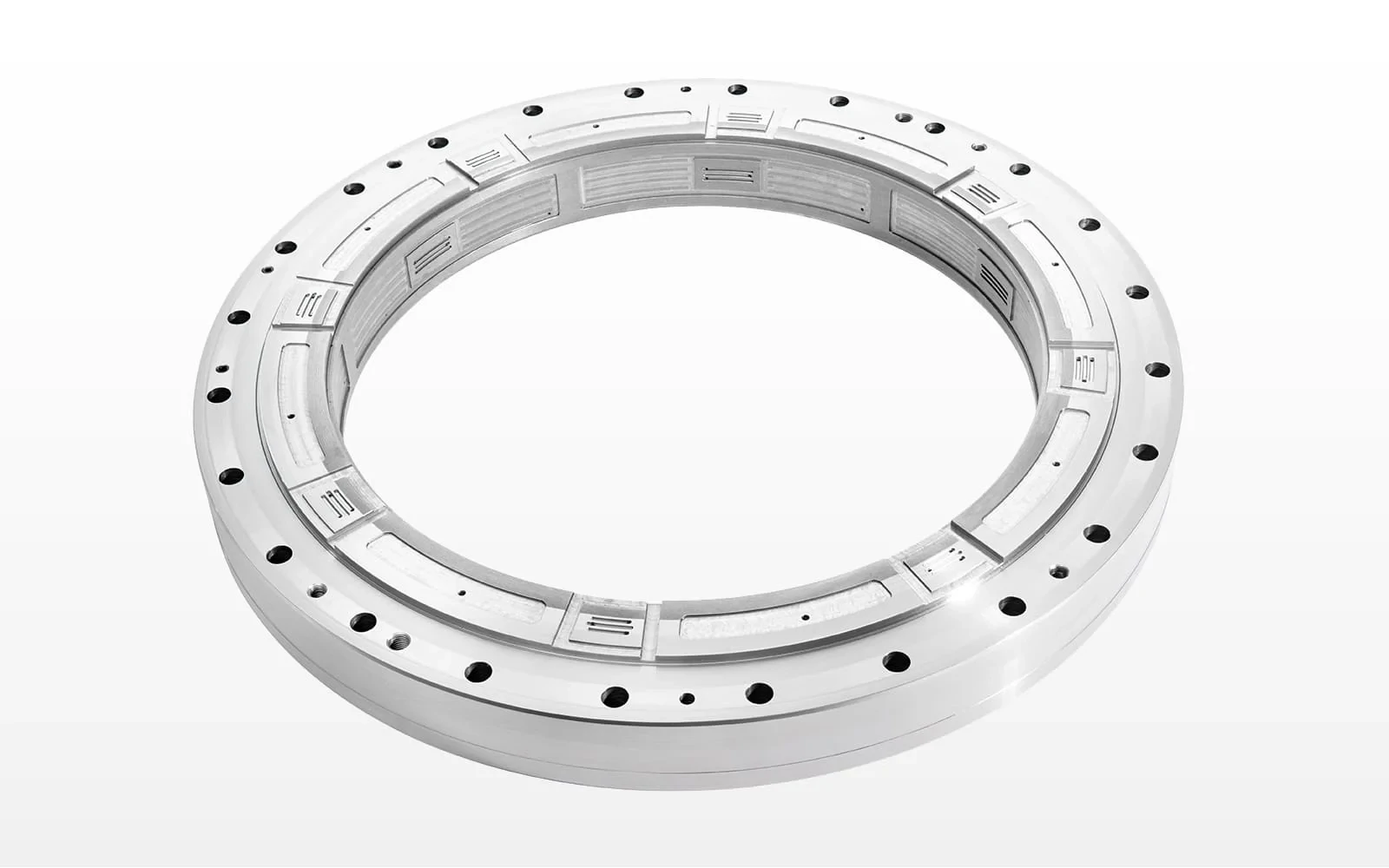Rolamento hidrostático radial
Aplicações típicas
Maquinação de ultra-precisão: fusos de máquinas-ferramentas de nível nanométrico, rectificadoras de espelhos ópticos
Aeroespacial: rolamentos de controlo de atitude de satélites, bancos de ensaio de motores de aeronaves
Equipamento energético: grandes grupos geradores hidroeléctricos, rolamentos de bombas principais nucleares
Instrumentos de investigação científica: mesa giratória para microscópio eletrónico, interferómetro laser
Fabrico inteligente: robô industrial redutor RV, equipamento para bolachas semicondutoras
Principais vantagens
Precisão ao nível dos microns: a espessura da película de óleo pode ser controlada com precisão (1-50μm)
Carga ultra-elevada: a capacidade de carga da área unitária pode atingir 30MPa
Funcionamento sem desgaste: a vida útil teórica pode atingir mais de 100 000 horas
Supressão de vibrações: o amortecimento inerente é 3-5 vezes superior ao dos rolamentos tradicionais
Excelente eficiência energética: o consumo de energia por fricção é reduzido em mais de 90%
Adaptabilidade ambiental: suporta condições de alta temperatura de -196 ℃ (nitrogênio líquido) a 300 ℃
Análise da tecnologia de rolamentos hidrostáticos radiais
Princípio de funcionamento
Radial rolamentos hidrostáticos utilizar um dispositivo externo de fornecimento de óleo para pressionar o meio lubrificante na fenda da chumaceira para formar uma película de óleo hidráulico estável. O efeito de pressão estática gerado pela película de óleo isola eficazmente o contacto do par de fricção e atinge um estado de funcionamento de fricção quase nula. Este método de apoio sem contacto é particularmente adequado para cenários industriais com requisitos rigorosos de precisão e estabilidade.
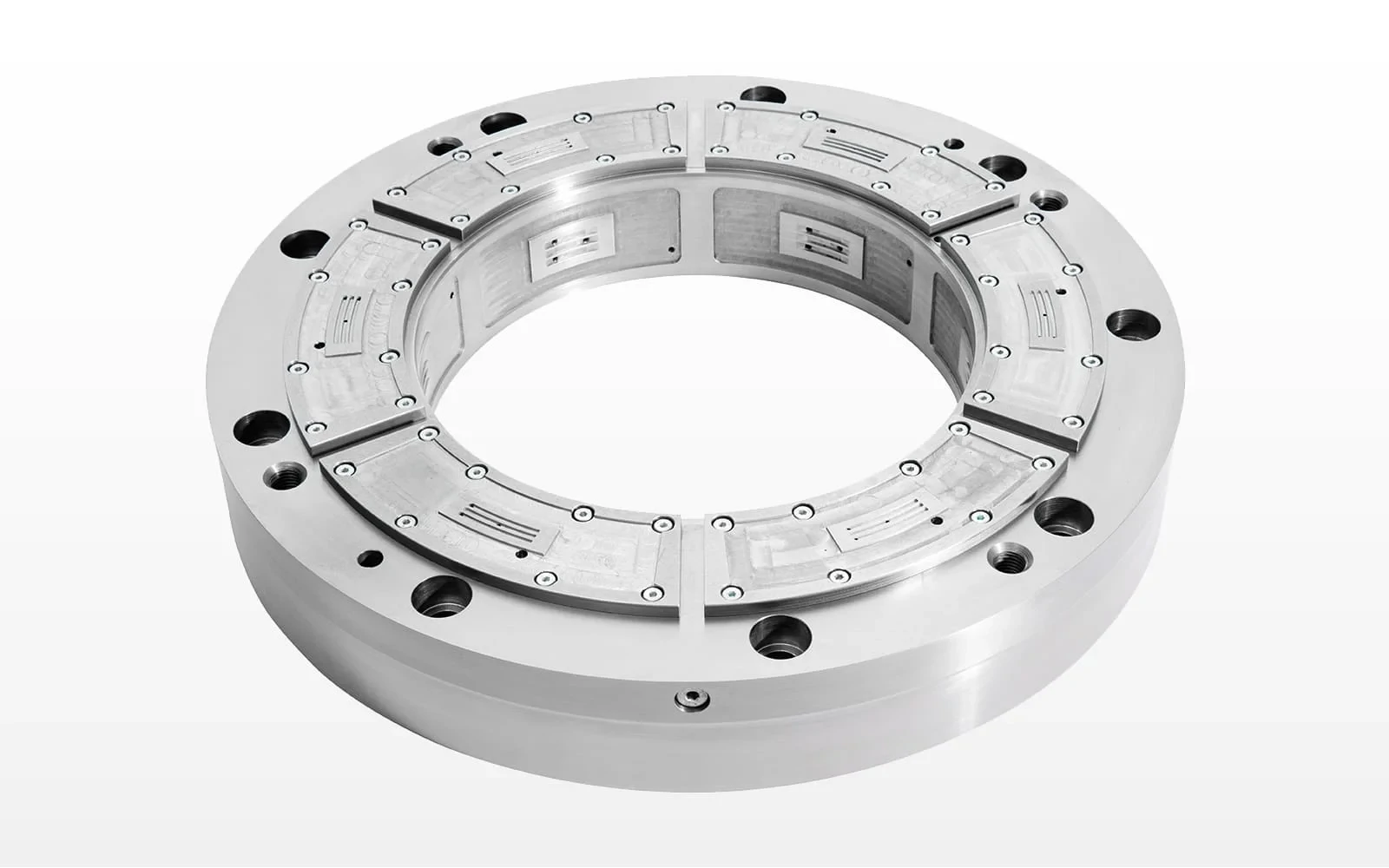
Marcas comuns
Rolamentos hidrostáticos radiais SKF
Rolamento hidrostático radial FAG
Rolamento hidrostático radial INA
Rolamento hidrostático radial NSK
Rolamento hidrostático radial NTN
Rolamento hidrostático radial TIMKEN
Rolamento hidrostático radial NACHI
Rolamento hidrostático radial KOYO
Áreas de aplicação típicas
Equipamento de fabrico de precisão
Sistema de fuso de máquina-ferramenta de ultra-precisão
Mecanismo de rotação do equipamento de retificação de alta precisão
Equipamento aeroespacial
Plataforma de ensaio de motores aeronáuticos
Dispositivo de controlo da atitude do veículo espacial

Sistema de energia
Componentes de suporte de grandes geradores
Mecanismo de transmissão do equipamento de perfuração em águas profundas

Instrumentos de medição e deteção
Equipamento de deteção ótica de nível nanométrico
Mesa giratória para instrumentos de metrologia de precisão
Sistema de equipamento inteligente
Juntas de precisão para robôs industriais
Unidade de transmissão da linha de produção automatizada
Principais vantagens técnicas
Precisão de nível nanométrico: O suporte de película de óleo elimina o contacto mecânico e atinge uma precisão de funcionamento submicrónica
Excelente desempenho de suporte de carga: O sistema hidráulico pode fornecer uma pressão de suporte de até 100MPa
Funcionamento ultra-suave: O efeito de amortecimento da película de óleo suprime eficazmente a vibração, e o ruído de funcionamento é inferior a 40dB
Caraterísticas de consumo de energia ultra-baixo: O coeficiente de fricção é tão baixo quanto 0,001, e o efeito de poupança de energia é Resultados significativos
Vida útil extremamente longa: a conceção de desgaste sem contacto aumenta a vida útil em 5-8 vezes
Adaptabilidade ambiental: pode funcionar de forma estável em uma ampla faixa de temperatura de -50 ℃ a 200 ℃
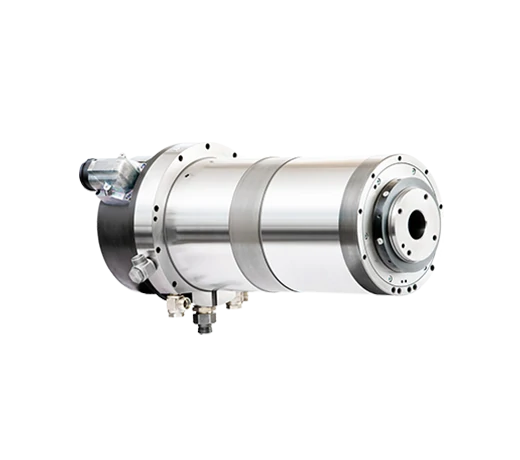
Soluções comuns de resolução de problemas
Problema de falha da película de óleo
Causa: pressão de alimentação de óleo anormal ou bloqueio do circuito de óleo
Contramedidas: instalar um dispositivo de controlo da pressão e limpar regularmente o circuito de óleo
Deterioração do desempenho da lubrificação
Causa: contaminação ou deterioração do óleo
Contramedidas: estabelecer um sistema de inspeção regular do óleo e adotar um sistema de filtragem em várias fases
Aumento anormal da temperatura
Causa: arrefecimento insuficiente ou funcionamento em sobrecarga
Contramedidas: otimizar a conceção do sistema de arrefecimento e instalar um dispositivo de alarme de temperatura
A vibração excede a norma
Causa: Desvio de montagem ou desfasamento dos parâmetros da película de óleo
Contramedidas: utilizar um instrumento de alinhamento a laser para calibrar e ajustar os parâmetros da espessura da película de óleo
Resumo técnico
Os rolamentos hidrostáticos radiais, um dos rolamentos lisoscom a sua tecnologia revolucionária de suporte sem contacto, demonstraram vantagens insubstituíveis no domínio do fabrico de equipamento topo de gama. Esta tecnologia resolve perfeitamente o problema da indústria de alta precisão, alta carga e longa vida útil através de uma película de óleo hidráulico controlada com precisão. As suas vantagens de desempenho são particularmente proeminentes em domínios de ponta como a maquinagem de precisão e a indústria aeroespacial. A conceção razoável do sistema, combinada com planos de manutenção científicos, pode manter o desempenho dos rolamentos sempre nas melhores condições, proporcionando um apoio técnico fiável ao equipamento industrial moderno.

